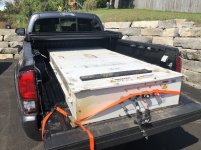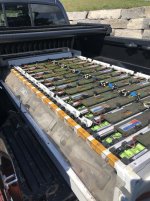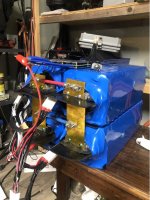I'm looking to build a mega Lithium Iron Phosphate battery bank for our camper. I want to eliminate the need for running our generator for overnights while boondocking while still being able to run our little 2200BTU air conditioner overnight for sleeping, charge my laptop, run the electric stove, etc.
I've hunted down some good prices on cells from a very reputable dealer, and ordered a BMS today from one of the manufacturers (JK) on AliExpress.
The cells look like they'll be around $600-$800 from the source I'm looking at for high 280ahx4s.
I may opt for 200ah cells to save a few bucks if something good comes along price wise. 200ah will do what I want, but 280ah is just that little bit better for not a lot less price.
They also have more traditional sizes - a 100ah pack (with a full 100ah ussable, unlike lead acid where only ~50ah is actually usable) could be built for around $400.
Anyone interested, respond here.
My goal is to save some coin on shipping - the more batteries ordered together the better the shipping deal will end up being.
I've hunted down some good prices on cells from a very reputable dealer, and ordered a BMS today from one of the manufacturers (JK) on AliExpress.
The cells look like they'll be around $600-$800 from the source I'm looking at for high 280ahx4s.
I may opt for 200ah cells to save a few bucks if something good comes along price wise. 200ah will do what I want, but 280ah is just that little bit better for not a lot less price.
They also have more traditional sizes - a 100ah pack (with a full 100ah ussable, unlike lead acid where only ~50ah is actually usable) could be built for around $400.
Anyone interested, respond here.
My goal is to save some coin on shipping - the more batteries ordered together the better the shipping deal will end up being.

























